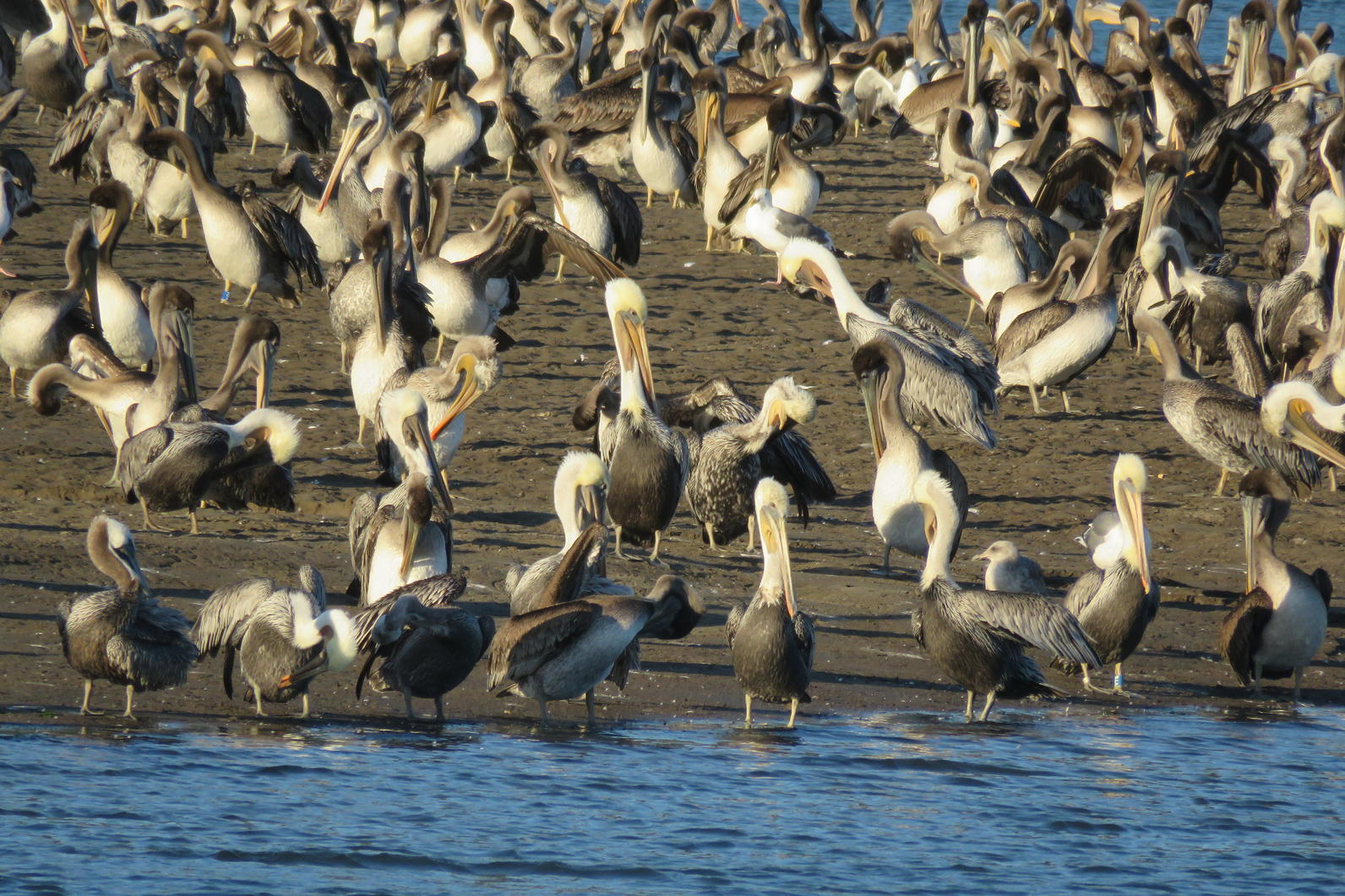
The goal of the twice-a-year survey - which began in 2016 - is to track the abundance and age distribution of the California brown pelican subspecies, which numbers approximately 160,000 individuals and ranges from northern Mexico through British Columbia. The survey provides insight into the health of the population as climate change affects its ocean environment. Just as important, it connects people with this iconic coastal species and with others who participate in the survey.
The survey complements efforts that started in 2012 on the part of the Audubon network to help brown pelicans through advocacy focused on protecting forage fish, and on continued monitoring of breeding success at the Channel Islands, the only U.S. breeding site. The U.S. Fish and Wildlife Service is our partner in the survey and has also been active in helping to bring about ecosystem-based management of northern anchovy, the most important food for brown pelicans. Our colleagues in Mexico at Conservacion de Islas monitor breeding success at Gulf of California breeding colonies, protect colonies from degradation, and lead efforts for bi-national collaboration.
The September 2018 survey yielded over 19,000 individuals at 84 sites from San Diego, California through northern Washington state. About 125 people participated, including Judy Irving, the creator of the powerful and critically acclaimed 2014 documentary Pelican Dreams. Judy joined Golden Gate Audubon on their boat-based survey of Alameda Breakwater Wildlife Reserve, San Francisco Bay, and had the following to say:
OH. MY. GOSH. What a great experience. As the sunset deepened and darkened behind the city, I sat up top on Jim’s boat and could see endless undulating lines of pelicans heading in to their favorite roost. Won’t ever forget that sight.
Sara Miller, a U.S. Fish and Wildlife Service biologist with the Sonny Bono Salton Sea National Wildlife Refuge, shared her experience with us:
The day of the survey, my wife and I spent a few hours surveying brown pelicans along the shoreline of the Salton Sea. It was hot, even near sunset, but we appreciated the opportunity to take a break from the bustle of modern life and just be observers of nature for a while.
We deeply appreciate our participants, regional coordinators and agency partners stepping up to help brown pelicans—while they connect with one of our priority species on the west coast from Mexico through Washington. If you’d like to participate, please go to the website for more information and contacts.
By Anna Weinstein
Monthly Giving
Our monthly giving program offers the peace of mind that you’re doing your part every day.




